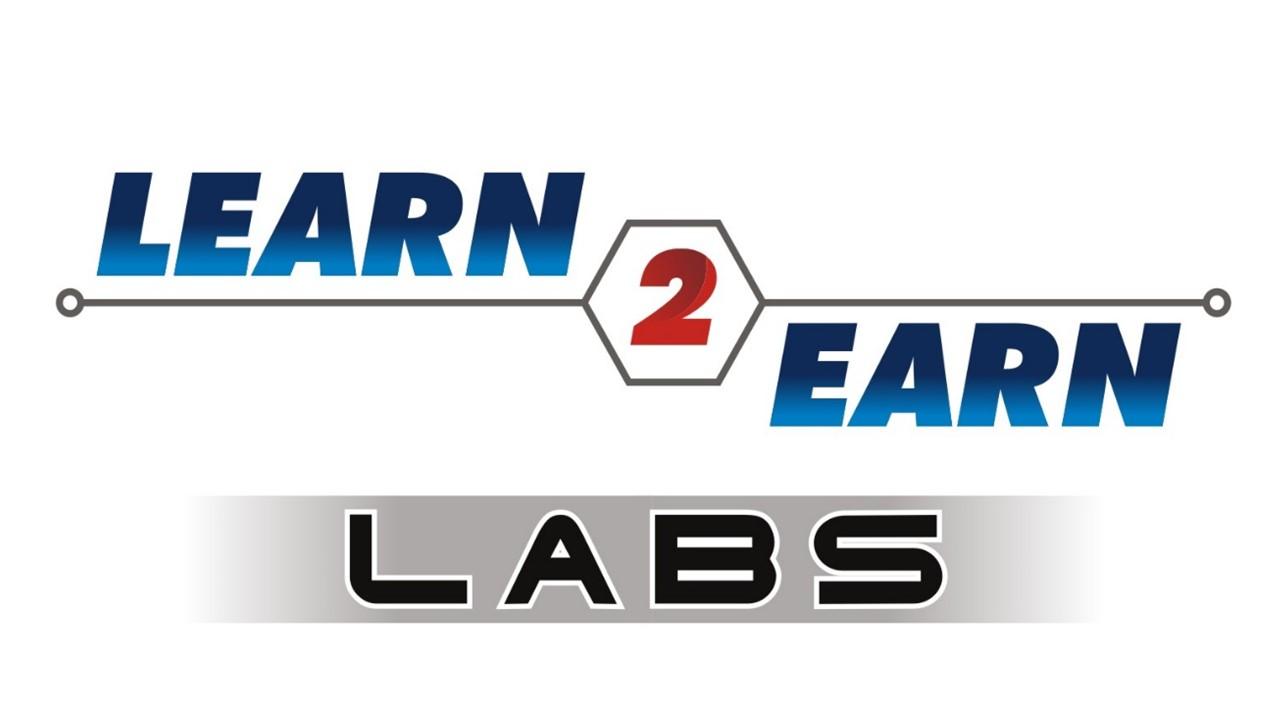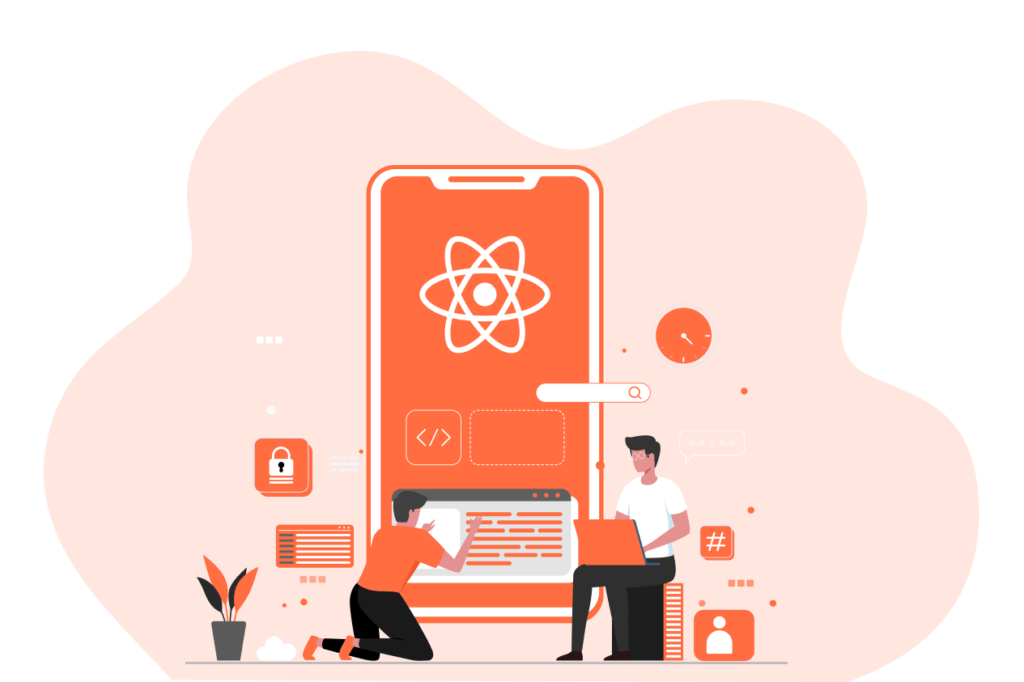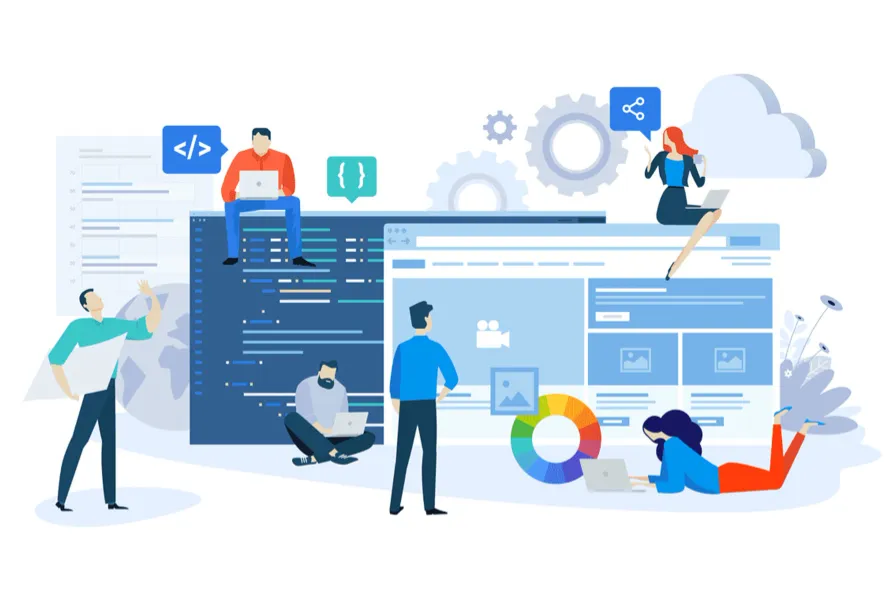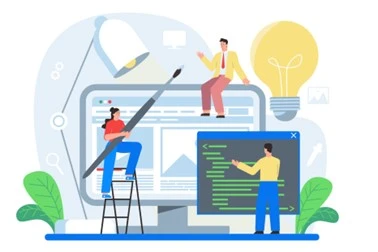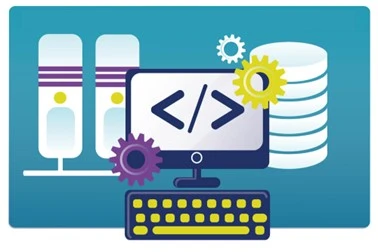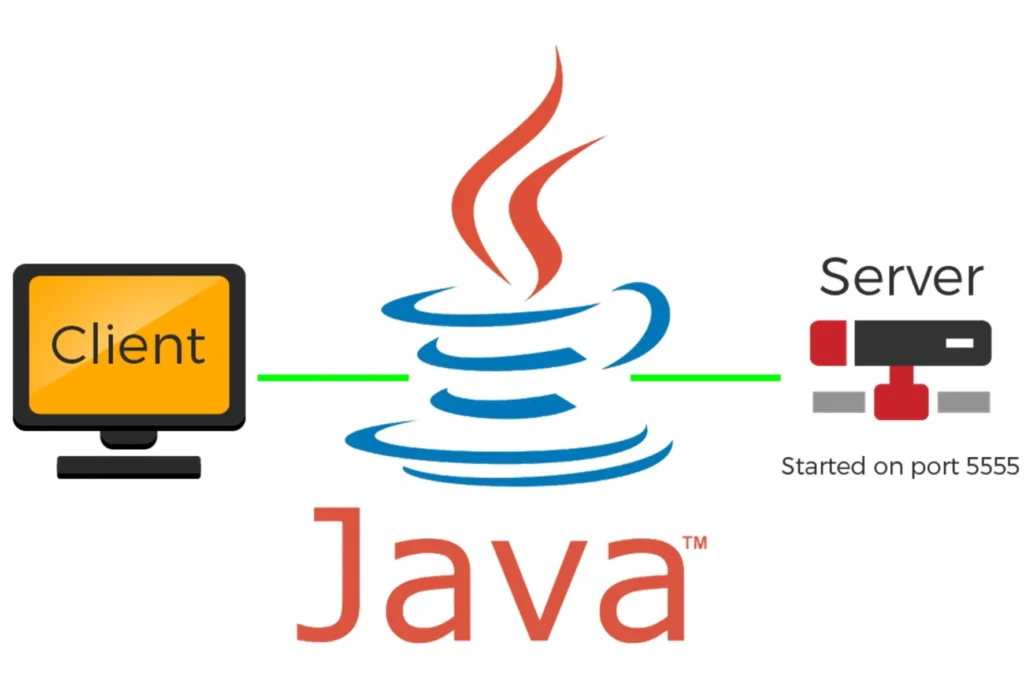
Become a
Full Stack Software Engineer Using Java
With 8+ LPA Guaranteed Package
Why, choose full stack as a career ?
Full Stack Engineers are in Demand
The demand for full-stack software professionals has been increased as business organizations continue to expand their online presence. They always look to hire professionals who can work in multiple domains.
Versatility & Job Security
The Versatility of Full Stack engineers makes them valuable to businesses and provide them stability in the constantly changing industry.
Handsome Salary
The full stack software professionals are often paid well due to their variety of skills, experience and high demands.
Promotions & Career Growth
As they can work in different specializations hence they get promotions frequently and can become team leads, project managers, consultant, CTO’s, or even start their own businesses.
Training Roadmap
Full Stack Engineer
In general, the developers who work on web services usually stick with front-end components or back-end logic or development operations and face difficulty. The same problem also occurs with others when they stick with the requirements & processes belonging to different domains. But a full stack professional is someone who handles and manages most of the operations, that’s why they are in demand.
Front End (HTML, CSS, JavaScript, EcmaScript & ReactJS)
Database (MySQL & MongoDB)
Deployment (Jenkins, Docker, Ansible & Kubernetes)
Back End (Java, Spring & Hibernate)
Server & Network (Linux & AWS )
Project Management (Agile Model & Jira)
Career Options After Completing Full Stack Engineer Course
As a full stack software professional, you have many different specializations so you will have different options to start your career.
Middle Level Career Options
After successfully completion of training, you can apply for various job roles, like
- Full Stack Developer
- System Engineer
- SDE – I / II
- Front End Developer
- System Architect
- DevOps Engineer, etc.
Top Level Career Options
After two to five years of experience, you can apply for job roles, like
- SDE – III
- Project Consultant
- Team Lead
- Enterprise Architect
- Project Manager
- Project Head
- Chief Technical Officer (CTO)
Full Stack Training Program
This program provides students with essential knowledge and practical skills to excel in project development. Combining theory with hands-on experience, it prepares participants to manage projects effectively, solve challenges, and use industry-relevant tools. Designed for success, it empowers learners to perform like experts and achieve excellence in the field.

Capstone Projects
To build your hands-on expertise and portfolio

Live Project Work
To build your hands-on expertise

Resume Building Assistance
To create an attractive resume for you

Interview Preparation
So you can present yourself in a better way

Mentoring & Job Assistance
To help you in getting good career or placements
Who Can Join
- Any graduate or post graduate student from B.tech or M.tech (any specialization), BCA or MCA, B.Sc. or M.Sc. (CS / IT) can join the full stack training. The student must secured at-least 60% marks throughout the graduation or post graduation degree for getting the job guarantee promise.
- Any working professional, belongs to computer science or IT specialization and now looking for salary hike or promotions can also join the full stack training program.

Get Real Work Experience
Our USP is to give students, deep practical knowledge in a specific domain and help them get their dream jobs.
- Practice, what you learn
- Implement, what you practice
- Present, what you implement
Training Mode
Online Live Classes are also available
- 4x more effective way of learning
- Hands-on experience with projects & assignments
- Virtual class with real interaction with trainer
- Monitoring support & troubleshooting issues
- Masterclass from industry experts & leaders
- Live class recordings for revision purposes
Full Stack Development Training in Agra
Learn2Earn Labs
F-4, First Floor, Anna Ikon Complex, In Front of Deviram Food Circle, Sikandra-Bodla Road, Sikandra, Agra, Uttar Pradesh – 282007
Call: +91-9548868337
Program Details
Feel free to call
Request More Information
During training you will go through with programming methodologies, development approaches, case studies, code deployment, design thinking concepts, assignments, and mini projects that will help you to become an expert full stack engineer. You would get a hands-on expertise over the most in-demand technologies, platforms and tools.
Introduction to Java and its features, JDK, JRE, and JVM - Differences & Setup, Java Virtual Machine (JVM) Architecture, Java Compilation and Execution Process, Writing and Running a Simple Java Program, Variables, Data Types, and Type Casting, Java Operators: Arithmetic, Logical, Relational, Bitwise, Control Flow Statements: if-else, switch-case, Loops: for, while, do-while, enhanced for (forEach), Methods: Declaration, Calling, and Overloading, Method Parameters: Pass by Value vs Pass by Reference, Introduction to Arrays: Single & Multidimensional, Java String Handling and String Methods, StringBuilder and StringBuffer - Performance Comparison, Java Memory Management (Heap & Stack), Static vs Non-Static Methods and Variables, Java Naming Conventions & Coding Standards, Java Packages: Importing & Organizing Code, Understanding Classpath & Module System, Java IDEs Setup: Eclipse, IntelliJ IDEA; Writing a Simple Java Application with Console I/O, Scanner Class for User Input Handling, Understanding Primitive vs Wrapper Classes, Java Math Class and Random Numbers, Best Practices for Writing Efficient Java Code.
What is OOP? Principles & Benefits, Classes & Objects: Creating and Using Objects, Constructors: Default, Parameterized, Copy Constructor, this Keyword & Method Chaining, Static vs Instance Members, Encapsulation: Getters & Setters, Inheritance: Types (Single, Multilevel, Hierarchical), Method Overriding vs Overloading, super Keyword in Inheritance, final Keyword: Variables, Methods, and Classes, Abstraction: Abstract Classes vs Interfaces, Interface Implementation & Default Methods, Multiple Inheritance in Java (Using Interfaces), Polymorphism: Compile-time vs Runtime, Nested & Inner Classes, Anonymous Inner Classes, Java Lambda Expressions & Functional Interfaces, Java Enum & Custom Enum Methods, Annotations: @Override, @Deprecated, @FunctionalInterface, Understanding Object Class & toString() Method, Cloning Objects in Java, Garbage Collection & finalize() Method, Comparing Objects using equals() and hashCode(), Best Practices for Object-Oriented Programming.
What are Exceptions?, Difference Between Checked and Unchecked Exceptions, Java Exception Hierarchy, Handling Exceptions using try- catch, Multiple catch Blocks, finally Block: When and How to Use It, throw Keyword: Throwing Custom Exceptions, throws Keyword: Declaring Exceptions, Creating Custom Exceptions, Exception Propagation in Java, Stack Trace Analysis, Handling NullPointerException, Handling ArithmeticException (Divide by Zero), Handling ArrayIndexOutOfBoundsException, Handling ClassNotFoundException, Handling FileNotFoundException, Handling NumberFormatException, Handling IOException & SQLException, Using Assertions for Debugging, Multi-Catch Exception Handling, Try- With-Resources for Automatic Resource Management, Logging Exception Details using Java Logger, Rethrowing Exceptions in Java, Using Custom Exception Messages, Best Practices for Exception Handling.
Introduction to Java I/O Streams, Byte Streams vs Character Streams, File Class & File Operations, Creating and Deleting Files in Java, Reading and Writing Text Files, BufferedReader & BufferedWriter, FileReader & FileWriter, InputStreamReader & OutputStreamWriter, Reading Console Input Using Scanner Class, FileInputStream & FileOutputStream, Copying File Content Using Streams, Random Access File Handling, Serialization & Deserialization, ObjectInputStream & ObjectOutputStream, Using Properties File in Java, ZIP File Handling in Java, Reading and Writing JSON Files, Reading and Writing CSV Files, Handling Large Files Using Streams, Understanding Charset and Encoding, Working with NIO Package for Fast File Handling, Java 8 File I/O Enhancements (Files API), Writing a Simple File Handling Utility Class, Exception Handling in File Operations, Best Practices for Java File Handling.
What is Multithreading? Benefits & Use Cases, Thread Lifecycle & States, Creating Threads Using Thread Class, Creating Threads Using Runnable Interface, Difference Between start() and run() Method, Thread Synchronization Techniques, synchronized Keyword & synchronized Blocks, Inter-thread Communication (wait(), notify(), notifyAll()), Deadlock: Causes & Prevention, Using ReentrantLock for Synchronization, Thread Priorities & ThreadGroup, ThreadPool Executor Framework, Callable vs Runnable Interface, Future & CompletableFuture in Java 8, ForkJoin Framework for Parallel Processing, Timer and TimerTask for Scheduling Tasks, Atomic Variables for Lock-Free Synchronization, Java Memory Model & Volatile Keyword, Semaphore & CountdownLatch for Thread Synchronization, CyclicBarrier & Phaser for Coordinating Threads, Parallel Streams in Java 8, Working with Concurrent Collections, Handling InterruptedException, Writing a Multithreaded Java Program, Best Practices for Multithreading.
Introduction to Collection Framework, Differences Between Arrays & Collections, Collection Interface & Its Subinterfaces, Iterable, Collection, List, Set, Map Overview; List Implementations: ArrayList, LinkedList, Vector, Stack; Set Implementations: HashSet, LinkedHashSet, TreeSet; Map Implementations: HashMap, LinkedHashMap, TreeMap, Hashtable; Queue & Deque Implementations: PriorityQueue, ArrayDeque, How HashMap Works Internally?, LinkedHashMap vs TreeMap vs HashMap, Sorting Collections using Comparable & Comparator, Synchronization of Collections (Collections.synchronizedList), Fail-Fast vs Fail-Safe Iterators, ConcurrentHashMap vs SynchronizedMap, Performance Comparison of Different Collections, Introduction to Generics, Creating Generic Classes & Methods, Type Parameters in Generics, Wildcards (? extends, ? super), Bounded Type Parameters in Generics, Generics & Type Erasure in Java, Working with Streams & Collections Together, Using Collections in Real-World Applications, Implementing Custom Collection Classes, Best Practices for Using Collection Framework.
Introduction to Regular Expressions, Understanding Pattern & Matcher Classes, Basic Regex Patterns & Syntax, Matching Single Characters & Character Sets, Quantifiers (*, +, ?, {n}), Anchors (^ for start, $ for end), Working with Groups & Capturing Groups, Matching Special Characters (., \d, \s, \w, etc.), Replacing Text Using Regex, Splitting Strings Using Regex, Validation Using Regular Expressions, Email Validation Using Regex, Phone Number Validation Using Regex, Extracting Data from Strings Using Regex, Regex for Date Format Validation, Using Lookaheads & Lookbehinds, Case-Insensitive Matching with Flags, Nested & Complex Regex Patterns, Optimizing Regex Performance, Using Regex in Java Streams & Collections, Finding and Replacing Multiple Patterns, Writing Efficient Regex for Large Text Processing, Using Java's Pattern.compile() & Matcher API, Testing Regex with Online Tools, Best Practices for Writing Maintainable Regex.
Introduction to Java Streams, Understanding Stream Pipeline & Processing, Creating Streams from Collections & Arrays, Creating Streams from Files & Strings, Intermediate Operations: filter(), map(), flatMap(), Terminal Operations: forEach(), collect(), reduce(), Sorting Streams using sorted(), Filtering & Transforming Data in Streams, Collecting Data using Collectors.toList(), toSet(), toMap(), Using findFirst(), findAny() for Element Retrieval, Checking Elements with allMatch(), anyMatch(), noneMatch(), Counting Elements with count(), Generating Streams with Stream.generate() & Stream.iterate(), Primitive Streams: IntStream, LongStream, DoubleStream, Mapping with mapToInt(), mapToLong(), mapToDouble(), Converting Streams to Arrays & Lists, Using Optional Class with Streams, Parallel Streams vs Sequential Streams, Performance Considerations of Parallel Streams, Working with Files & I/O Streams using Stream API, Implementing Custom Stream Operations, Debugging Streams Using peek(), Exception Handling in Streams, Writing Custom Collector Functions, Best Practices for Using Streams in Java.
Introduction to MySQL, Creating and Managing Databases, SQL Queries: SELECT, INSERT, UPDATE, DELETE, Database Indexing and Optimization, Relationships and Foreign Keys, Using MySQL with Node.js (mysql2, Sequelize), Advanced Query Optimization, Transactions and Rollback Mechanisms, Data Normalization Techniques, Writing Complex Joins and Subqueries, MySQL Performance Tuning and Caching, Working with Stored Procedures, Triggers and Events in MySQL, MySQL User Management and Security Best Practices, Backup and Restore Strategies, Implementing Full-Text Search in MySQL, Scaling MySQL Databases (Replication, Partitioning), Hands-on Practice and Assignments.
Introduction to HTML & History, HTML Elements and Attributes, Semantic HTML & Importance, HTML Forms and Form Elements, Input Types and Form Validation, HTML Tables and Structuring Data, HTML5 Elements (Audio, Video, Canvas, SVG), HTML Meta Tags and SEO Basics, Creating Multi-page Websites, Links and Navigation Menus, HTML5 Storage (LocalStorage, SessionStorage), HTML Accessibility Features (ARIA), Using HTML for Email Templates, HTML Best Practices and Code Formatting, HTML Performance Optimization, HTML Boilerplate and Frameworks Overview, Introduction to PWA (Progressive Web Apps), HTML with JavaScript Integration, Hands-on Practice and Assignments.
Introduction to Spring, Dependency Injection, Data Integration, IOC Container, Maven Project for Spring & Dependencies, Spring Configuration, Injecting Collections, Injecting Reference Type & Constructor, Spring Bean, Life Cycle Methods, Annotations, Spring Bean Scope, Spring Expression Language. Introduction to Spring JDBC, Database Setup, CRUD Operations, Row Mapper, Introduction to Spring ORM, CRUD Operations using Spring ORM, Introduction to Spring MVC, MVC Design Pattern, Tomcat Configuration, JSP Expression Language, JSTL, Handling Forms, Redirecting in Spring MVC, Error Handling, Exception Handling, Spring MVC Interceptor, Aspect Oriented Programming (AOP).
Introduction to CSS & CSS Syntax, Selectors, Specificity & Inheritance, Box Model and Positioning Techniques, Float, Clear and Overflow Properties, CSS Flexbox and Grid Layouts, Media Queries and Responsive Design, CSS Variables and Custom Properties, CSS Animations and Transitions, Pseudo-elements and Pseudo-classes, CSS Units (px, %, em, rem, vh, vw), Backgrounds, Borders, and Shadows, Text Styling and Typography Best Practices, CSS3 New Features and Properties, Implementing Dark and Light Modes, CSS Preprocessors (SASS, LESS - Introduction), Using Google Fonts and Custom Fonts, CSS Frameworks (Bootstrap, Tailwind - Overview), Debugging CSS Issues, Performance Optimization in CSS, Hands- on Practice and Mini Projects.
Introduction to JavaScript, Variables (var, let, const) and Data Types, Operators and Expressions in JavaScript, Control Flow (if-else, switch-case), Loops (for, while, do-while), Functions (Named, Anonymous, Arrow Functions), Function Scope and Closures, JavaScript Objects and Prototypes, Arrays and Array Methods, String Manipulation and Regular Expressions, Events and Event Listeners, DOM Manipulation and Traversal, Forms Handling and Validation, Error Handling (try- catch, finally), JavaScript Timers (setTimeout, setInterval), JavaScript ES6+ Features
(Destructuring, Spread, Rest), JavaScript Best Practices and Coding Standards, Hands- on Practice and Assignments.
Introduction to Web Applications & Servlets, Difference Between CGI & Servlets, Servlet Lifecycle: init(), service(), destroy(), Writing & Deploying a Simple Servlet, HttpServlet & Handling HTTP Requests, GET vs POST Methods in Servlets, ServletConfig vs ServletContext, Request & Response Handling in Servlets, Redirecting Requests Using sendRedirect() & forward(), RequestDispatcher & Its Use Cases, Working with Servlet Filters & Interceptors, Implementing Session Management in Servlets, Cookies vs Sessions: Which to Use?, URL Rewriting for Session Management, Understanding Servlet Listeners, File Uploading Using Servlets, Exception Handling in Servlets, Logging & Debugging Servlets, Asynchronous Processing in Servlets, Writing a Custom Servlet Utility Class, Implementing Security in Servlets, Working with Servlet- Based REST APIs, Deploying Servlets in Tomcat Server, Servlet Performance Optimization, Best Practices for Writing Maintainable Servlets.
Introduction to JSP & Its Importance, Difference Between JSP & Servlets, JSP Lifecycle: Compilation, Initialization, Execution, Writing & Deploying a Simple JSP Page, JSP Scripting Elements: Declarations, Scriptlets, Expressions, Understanding JSP Directives, JSP Implicit Objects & Their Usage, JSP Form Handling & Data Submission, JSP PageContext & Request Attributes, Working with JavaBeans in JSP, JSTL (JavaServer Pages Standard Tag Library), Using JSP Custom Tags for Code Reusability, JSP Expression Language (EL), Implementing MVC Architecture with JSP & Servlets, JSP Exception Handling & Error Pages, Session Management in JSP, Using JSP with Databases (JSP + JDBC), AJAX Integration with JSP for Asynchronous Data Loading, Working with JSP Filters & Interceptors, Securing JSP Applications, JSP Caching for Performance Optimization, Debugging JSP Applications, Deployment of JSP Projects in Tomcat Server, Writing Reusable JSP Templates & Components, Best Practices for Writing Scalable JSP Applications.
Introduction to Spring Framework & Architecture, Understanding Inversion of Control (IoC), Dependency Injection (DI) Concepts, Types of Dependency Injection: Constructor & Setter, Spring Bean Lifecycle & Configuration, Bean Scopes: Singleton, Prototype, Request, Session, Java-Based Configuration vs XML Configuration, Using @Component, @Service, @Repository, ApplicationContext & BeanFactory Overview, Event Handling in Spring, Spring Profiles for Environment- Specific Configurations, Spring AOP (Aspect-Oriented Programming), @Transactional & Transaction Management, Using @PostConstruct & @PreDestroy, Externalizing Configuration using application.properties, Introduction to Spring Expression Language (SpEL), Using @Value & @PropertySource for Configuration, Introduction to Spring Boot & AutoConfiguration, Understanding Spring Boot Starter Dependencies, Logging in Spring Boot with SLF4J & Logback, Introduction to Spring Events & Listeners, Exception Handling in Spring Applications, Actuator for Monitoring Spring Applications, Integrating Spring with Thymeleaf for UI, Best Practices in Spring Application Development.
Introduction to ORM (Object Relational Mapping), Difference Between JDBC & ORM, Configuring Spring JDBC in Applications, Setting Up DataSource in Spring, Spring JDBC Template API & Usage, Handling Transactions in Spring JDBC, CRUD Operations using Spring JDBC, Batch Processing using JDBC Template, Exception Handling in JDBC Template, Introduction to Spring ORM, Integrating Spring with Hibernate, Using @Transactional for Declarative Transactions, Configuring Hibernate with Spring Boot, Defining Entities & Relationships in Hibernate, Working with Hibernate SessionFactory, Using Hibernate Criteria API for Queries, Querying Databases using HQL (Hibernate Query Language), Named Queries & Native Queries in Hibernate, Connection Pooling with HikariCP, Lazy vs Eager Loading in Hibernate, Caching Mechanisms in Hibernate (First & Second-Level Cache), Using EntityManager with Spring ORM, Auditing & Logging Database Transactions, Best Practices for Database Performance Optimization, Error Handling & Debugging in ORM Applications.
Introduction to NoSQL and MongoDB, CRUD Operations in MongoDB, Data Modeling and Indexing, Aggregation Framework in MongoDB, Using MongoDB with Mongoose, Understanding MongoDB Replication, Sharding and Load Balancing in MongoDB, Working with MongoDB Atlas, Data Backup and Restoration in MongoDB, Query Optimization in MongoDB, Working with MongoDB Transactions, MongoDB Performance Monitoring and Troubleshooting, Security Best Practices for MongoDB, Implementing Multi-Tenant Applications with MongoDB, Managing Large Datasets Efficiently, Hands-on Practice and Assignments.
What is Hibernate ORM? Features & Benefits, Configuring Hibernate in a Java Application, Mapping Entities & Relationships, Working with Hibernate Annotations, Hibernate Configuration File (hibernate.cfg.xml), SessionFactory & Session Management, Performing CRUD Operations with Hibernate, Hibernate Caching Strategies (1st Level & 2nd Level), Querying with Hibernate Criteria API, Named Queries & Native SQL in Hibernate, Relationship Mapping: One-to-One, One-to-Many, Many-to-Many, Inheritance Mapping Strategies in Hibernate, Using @Embeddable & @Embedded for Composite Objects, Using @Lob for Large Data Storage (BLOB & CLOB), Hibernate Transactions & ACID Compliance, Batch Processing & Performance Optimization in Hibernate, Lazy vs Eager Loading in Hibernate, Using Projections in Hibernate, Dynamic Queries using Hibernate Query Language (HQL), Indexing & Full-Text Search in Hibernate, Connection Pooling with Hibernate (HikariCP), Database Auditing with Hibernate Envers, Implementing Soft Delete in Hibernate, Hibernate with NoSQL Databases (MongoDB), Best Practices for Hibernate in Enterprise Applications.
Introduction to Spring MVC & MVC Architecture, Configuring Spring MVC in a Project, Understanding DispatcherServlet & Request Flow, Handling HTTP Requests with @Controller & @RestController, Working with @RequestMapping & @GetMapping/@PostMapping, Understanding Model, View, and Controller Separation, Binding Form Data Using @ModelAttribute, Handling Form Validations in Spring MVC, Using @PathVariable & @RequestParam, Exception Handling in Spring MVC using @ControllerAdvice, File Uploading & Downloading in Spring MVC, Working with View Technologies (JSP, Thymeleaf), Integrating Spring MVC with Hibernate ORM, Handling JSON Responses in Spring MVC, Pagination & Sorting in Spring MVC Applications, Consuming REST APIs in Spring MVC, CORS Handling in Spring MVC, Implementing Role-Based Access Control (RBAC), Session Management in Spring MVC, Interceptors & Filters in Spring MVC, Customizing HTTP Responses in Spring MVC, Performance Tuning & Optimization for Spring MVC, Deploying Spring MVC Applications in Tomcat, Implementing Logging & Monitoring in Spring MVC, Best Practices for Developing Scalable Web Applications.
Introduction to Spring Data & JPA, Setting Up Spring Data JPA with MySQL & MongoDB, Configuring DataSource & Connection Pooling (HikariCP), Defining JPA Entities & Relationships, Using Spring Data Repositories (CrudRepository, JpaRepository, PagingAndSortingRepository), Derived Query Methods in Spring Data, Custom Query Methods using @Query & JPQL, Native SQL Queries with Spring Data, Pagination & Sorting in Spring Data, Optimizing Queries with Indexing & Projections, Using MongoDB with Spring Data (MongoRepository), Document-Oriented Storage with MongoDB, Introduction to Spring Security, Configuring Spring Security in a Spring Boot Application, Understanding Authentication & Authorization, Implementing User Authentication with Spring Security, Role-Based Access Control (RBAC) & Authorities, Using JWT (JSON Web Token) for Authentication, Implementing OAuth2 Authentication, Encrypting Passwords with BCrypt & Spring Security, Securing REST APIs with Spring Security, CORS (Cross-Origin Resource Sharing) Handling, Securing Databases & Protecting Sensitive Data, Implementing Two-Factor Authentication (2FA), Best Practices for Securing Java Applications.
Introduction to Spring Boot & Features, Setting Up a Spring Boot Project (Spring Initializr), Understanding Auto-Configuration & Starter Dependencies, Application Configuration using application.properties & application.yml, Creating REST APIs with Spring Boot, Handling Exceptions using @ControllerAdvice & @ExceptionHandler, Logging with Spring Boot (SLF4J, Logback), Spring Boot Profiles for Multi-Environment Configurations, Spring Boot Actuator for Monitoring & Health Checks, Understanding Spring Boot DevTools for Faster Development, Consuming External APIs with RestTemplate & WebClient, Introduction to Microservices with Spring Boot, Testing Spring Boot Applications (Unit & Integration Tests), Optimizing Performance in Spring Boot Applications, Understanding and Using Spring Boot AOP (Aspect-Oriented Programming), Implementing Internationalization (i18n) in Spring Boot, Best Practices for Developing Spring Boot Applications.
Introduction to REST API & Principles (RESTful Architecture), Setting Up a Spring Boot REST API, Creating REST Controllers & Handling HTTP Methods, Using @RequestMapping, @GetMapping, @PostMapping, @PutMapping, @DeleteMapping, Understanding Request & Response Handling in REST APIs, Handling Path Variables & Request Parameters, Validating Request Data with @Valid & @Validated, Exception Handling in REST APIs, Using ResponseEntity for Custom API Responses, Pagination & Sorting in REST APIs, Consuming REST APIs with RestTemplate & WebClient, Implementing API Versioning in Spring Boot, Securing REST APIs with Spring Security & JWT, Role-Based Access Control (RBAC) in REST APIs, CORS Configuration for Public APIs, Rate Limiting & Throttling in REST APIs, Using API Gateway with REST APIs (Spring Cloud Gateway), Monitoring & Logging REST API Calls, Implementing OpenAPI & Swagger for API Documentation, Error Handling & Best Practices for REST API Development, Load Testing & Performance Optimization for REST APIs, Best Practices for Designing & Developing RESTful APIs.
Introduction to GraphQL & Comparison with REST, Setting Up GraphQL in Spring Boot, Understanding GraphQL Schema & Types, Creating GraphQL Queries in Spring Boot, Using Mutations to Modify Data in GraphQL, Implementing Field Resolvers in GraphQL, Nested Queries in GraphQL API, Using GraphQL Directives for Query Optimization, Pagination & Filtering in GraphQL APIs, Authentication & Authorization in GraphQL APIs, Handling GraphQL Errors & Exceptions, Batch Data Fetching with DataLoaders, GraphQL Subscription for Real- Time Updates, Query Performance Optimization in GraphQL, Combining GraphQL with Spring Data JPA, Using GraphQL with MongoDB in Spring Boot, Integrating GraphQL with Apollo Client, Monitoring & Logging GraphQL API Calls, Best Practices for Secure & Scalable GraphQL APIs.
Introduction to Unit Testing & Its Importance, Setting Up JUnit 5 in a Java Project, Writing Basic Test Cases with Junit, Understanding Assertions in JUnit 5 (assertEquals, assertTrue, assertThrows), Testing Exceptions in JUnit (@Test(expected = Exception.class)), Understanding Test Lifecycle Annotations (@BeforeEach, @AfterEach, @BeforeAll, @AfterAll), Running Parameterized Tests in Junit, Mocking Dependencies with Mockito, Using @Mock & @InjectMocks in Mockito, Stubbing Method Calls with Mockito, Verifying Method Calls & Interactions in Mockito, Mocking Static Methods with PowerMockito, Testing REST Controllers with MockMvc, Writing Integration Tests in Spring Boot, Testing Spring Boot Repositories with @DataJpaTest, Using @SpringBootTest for Application-Level Testing, Writing Test Cases for Service Layer in Spring Boot, Mocking External API Calls in Test Cases, Testing Security & Authentication in Spring Boot, Measuring Test Coverage with JaCoCo, Performance Testing Java Applications, Writing Custom JUnit Test Extensions, Best Practices for Writing Maintainable Tests, Real-World Case Study on Testing Java Applications.
Introduction to Angular 18 & Features, Setting Up Angular Environment (Node.js, Angular CLI), Creating & Running an Angular Project, Understanding Angular Project Structure, Components in Angular (Creating, Using, and Communicating), Working with Angular Templates & Directives (ngIf, ngFor, ngClass, ngStyle), Understanding Data Binding (Interpolation, Property, Event, and Two-Way Binding), Angular Services & Dependency Injection, Creating & Using Angular Modules, Working with Angular Forms (Template-Driven & Reactive Forms), HTTP Client in Angular (GET, POST, PUT, DELETE), Handling API Responses & Error Handling in Angular, Angular Routing (RouterModule, Lazy Loading, Route Guards), State Management in Angular using NgRx, Working with Pipes (Built-in & Custom Pipes), Observables & RxJS for Reactive Programming, Using Angular Material for UI Components, File Upload & Image Handling in Angular, Authentication & Authorization in Angular (JWT or OAuth2), Securing Angular Applications, Deploying Angular Apps (AWS S3), Performance Optimization in Angular Applications, Angular with Backend (Spring Boot, GraphQL), Best Practices for Developing Large-Scale Angular Applications.
Introduction to Cloud Computing – What is Cloud? Why is it important?; Traditional IT vs Cloud Computing – Understanding the differences; Cloud Computing Service Models – IaaS (Infrastructure-as-a-Service), PaaS (Platform-as-a-Service), SaaS (Software-as-a- Service); Cloud Deployment Models – Public Cloud, Private Cloud, Hybrid Cloud, Multi- Cloud; Virtualization vs Cloud Computing – Key Differences; Containerization vs Virtual Machines – Understanding when to use what; Cloud Storage Concepts – Object Storage vs Block Storage vs File Storage; Cloud Networking Concepts – VPC (Virtual Private Cloud), Load Balancers, Firewalls; Cloud Security Best Practices – Identity and Access Management (IAM), Encryption, Compliance; Cloud Cost Management – Understanding Cloud Pricing, Cost Optimization Strategies; Cloud-native vs Traditional Applications – Microservices, Serverless, Event-Driven Architectures; Disaster Recovery in Cloud Computing – Backup Strategies, Multi-Region Deployments; Introduction to DevOps – What is DevOps? Why is it needed?; DevOps Culture & Principles – Collaboration, Automation, Feedback Loops; Difference Between DevOps vs Traditional Software Development; Key DevOps Practices – Continuous Integration (CI), Continuous Deployment (CD), Infrastructure as Code (IaC), Monitoring & Logging; Understanding CI/CD Pipelines – Code Integration, Automated Testing, Deployment Automation.
Introduction to Linux & Distributions (Ubuntu, CentOS, RedHat), Installing Linux (Virtual Machine or Cloud Instance), Understanding Linux Filesystem & Directory Structure, Basic Linux Commands (ls, cd, pwd, cp, mv, rm, mkdir, rmdir), File Permissions & Ownership (chmod, chown, chgrp), Managing Processes (ps, top, kill, htop, nice, renice), File Management & Searching (find, grep, awk, sed), Users & Groups Management (useradd, usermod, passwd, groupadd), Package Management (APT, YUM, DNF), Networking Commands (ifconfig, netstat, ping, traceroute, iptables), Linux Shell Scripting (Bash, Shell Variables, Loops, Functions), Automating Tasks with Cron Jobs & Systemd Services, Managing Disk & Storage (df, du, fdisk, mount, umount), Configuring & Managing Firewalls (UFW, IPTables), Logging & Monitoring Linux System (journalctl, syslog, dmesg), Managing Linux Services & Daemons (systemctl, service), Understanding SSH & Remote Server Management, Setting Up & Managing Web Servers (Apache, Nginx), Creating & Managing Linux Users with Sudo Privileges, Linux Security & Hardening Best Practices, Performance Tuning & Optimization in Linux, Backups & Disaster Recovery in Linux, Best Practices for Linux Server Administration.
Introduction to Cloud Computing & AWS Fundamentals, Setting Up an AWS Free Tier Account, Understanding AWS Global Infrastructure (Regions & Availability Zones), Working with AWS Management Console & CLI, Introduction to AWS IAM (Users, Groups, Roles, Policies), Understanding AWS EC2 (Elastic Compute Cloud), Creating & Managing EC2 Instances, Working with Elastic Load Balancer (ELB) & Auto Scaling, Configuring AWS Security Groups & VPC, Introduction to AWS S3 (Simple Storage Service), Managing Object Storage & S3 Bucket Policies, AWS RDS (Relational Database Service) with MySQL, AWS DynamoDB (NoSQL Database) Overview, Introduction to AWS Lambda (Serverless Computing), Using API Gateway with AWS Lambda, AWS CloudFront for Content Delivery, AWS Route 53 (Domain & DNS Management), Monitoring with AWS CloudWatch & Logging with AWS CloudTrail, AWS SNS & SQS for Event-Driven Architectures, Introduction to AWS Elastic Beanstalk, AWS CloudFormation for Infrastructure as Code (IaC), AWS Cost Management & Budgeting Best Practices, AWS Security Best Practices & Compliance, Deploying & Managing Applications on AWS, Best Practices for Cloud Deployment & Performance Optimization.
Introduction to CI/CD & DevOps, Setting Up Jenkins (Installation & Configuration), Understanding Jenkins Pipeline, Creating & Running a Simple Jenkins Job, Configuring Jenkins with GitHub & GitLab, Understanding Jenkinsfile & Declarative Pipelines, Using Jenkins with Docker for CI/CD, Automating Builds with Maven & Gradle in Jenkins, Integrating Jenkins with AWS, Working with Jenkins Plugins for Enhanced Functionality, Configuring Webhooks & Triggers for Automated Builds, Implementing Jenkins Security Best Practices, Running Automated Tests with JUnit & Selenium in Jenkins, Using Jenkins Agents for Distributed Builds, Implementing Blue-Green Deployment with Jenkins, Setting Up Automated Deployment Pipelines, Jenkins Backup & Disaster Recovery Strategies, Best Practices for CI/CD in Large-Scale Applications, Debugging & Troubleshooting Jenkins Pipelines, Migrating Jenkins Jobs to Cloud-Based CI/CD Services, Best Practices for Scaling Jenkins Infrastructure.
Introduction to Containerization & Docker, Installing Docker & Understanding Docker Architecture, Creating & Managing Docker Containers, Writing & Building Dockerfiles, Understanding Docker Images & Docker Hub, Docker Volumes & Bind Mounts for Data Persistence, Networking in Docker (Bridge, Host, Overlay Networks), Using Docker Compose for Multi-Container Applications, Docker Security Best Practices; Introduction to Kubernetes (K8s), Setting Up Kubernetes Cluster (Minikube or K3s or AWS EKS), Understanding Kubernetes Components (Pods, Nodes, Deployments), Working with Kubernetes Services & Load Balancing, Kubernetes ConfigMaps & Secrets, Kubernetes Persistent Volumes & Storage Classes, Managing Kubernetes Deployments with Helm Charts, Monitoring Kubernetes Cluster with Prometheus & Grafana, Kubernetes Security Best Practices, CI/CD Pipeline with Kubernetes & Jenkins, Best Practices for Container Orchestration.
Introduction to Agile and Scrum Methodologies, Setting Up and Configuring Jira, Understanding Jira Boards (Kanban, Scrum), Creating and Managing Jira Issues, Working with Epics, Stories, and Tasks, Using Jira for Sprint Planning and Management, Setting Up Workflows and Automations in Jira, Tracking Progress with Jira Reports and Dashboards, Managing User Permissions and Access in Jira, Integrating Jira with GitHub and Other Tools, Best Practices for Project Management in Jira, Hands-on Practice and Assignments.
Under The Guidance of

M.Tech, B.Tech (C.S.E)
Mr. Mohit Singh is a professional full-stack trainer, project consultant, and startup mentor. He holds expertise in Java, Application Design, MERN Stack, DevOps, Design Thinking, and User Experience Design.
He has trained thousands of students & hundreds of employed professionals. He completed his pieces of training in Google, Gurugram, and short-term projects at IIT Delhi, IIT BHU & IIT Jodhpur.
He is also recognized as a Mentor with MEITY Startup Hub, startup India, Punjab Startup, startup Uttarakhand, Mumbai State Innovation Society, Atal Innovation Mission, etc. in the area of education & utility services.
Technologies and Platform

















Apply Now
Please enter the following details to initiate your application for the Full Stack Engineer using Java training program offered by Learn2Earn Labs, Agra
Eligibility Crietaria
A bachelor’s / master’s degree in Engg / Computers
Knowledge of operating system & shell script (preferred)
Having basic programming & development knowledge
Our Students are Working with Top Companies









